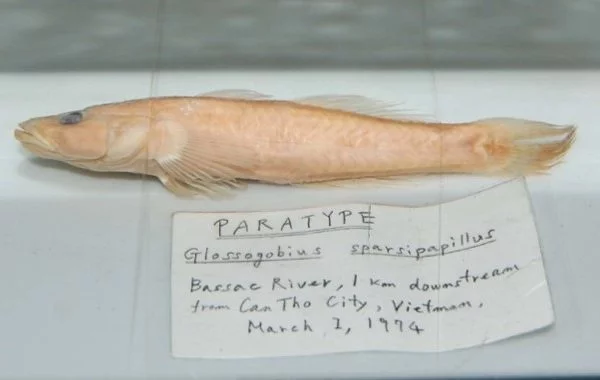Overview
Biological Museum, which is a division of the Faculty of Biology since 1956, was established early in 1926. This is the first biological museum found in Vietnam and in Indochina. Nowadays, the museum has been preserving thousands of animal and plant specimens collected from different regions of Vietnam. In addition, numerous specimens which are gifted...
MoreList of staff members
Image Name Academic title Academic degree Position Nguyen Thanh Nam Assoc. Prof. PhD Director Nguyen Thi Kim Thanh PhD Deputy Director La Thi Thuy MSc Researcher
MoreVertebrate Collections
Collections of fishes: In total there are 6,207 specimens of freshwater, brackish and marine fishes. Among them, there are 1,207 specimens of 396 species that have been identified (accounting for 15.33 percent of total species in Vietnam), including 941 research and exhibition specimens of 350 species and 266 specimens of holotype and paratype of 45...
MoreInvertebrate Collections
Most of 21,133 specimens are common insect orders such as Coleoptera, Lepidoptera, Blattoptera, etc and other orders of freshwater and marine invertebrates such as mollusk, echinoderms, corals (Anthozoa). Of them, 19,895 specimens are used in scientific research and 865 exhibition specimens (accounting for 7.9 percent of total specimens). Most of these specimens have not been...
MoreHerbarium collections
The herbarium collections, which were collected across Vietnam, at the Biological Museum include 28,372 specimens with 22,991 specimens of which are identified belonging to 4,287 species, 1,300 genera and 235 families, while 5,381 specimens have not been determined. Most specimens are in good condition.
MoreElephants gesture to signal what they want—just like us
Published 2025-07-08T07:01:00Z by Phie JacobsNew experiments show elephants use a wide range of movements to express their desires
Some butterflies adapted to have second ‘heads’ that confuse predators
Published 2025-07-08T07:01:00Z by Annika InampudiA new evolutionary analysis of butterflies finds “false heads” arose from the coalescence of multiple traits





